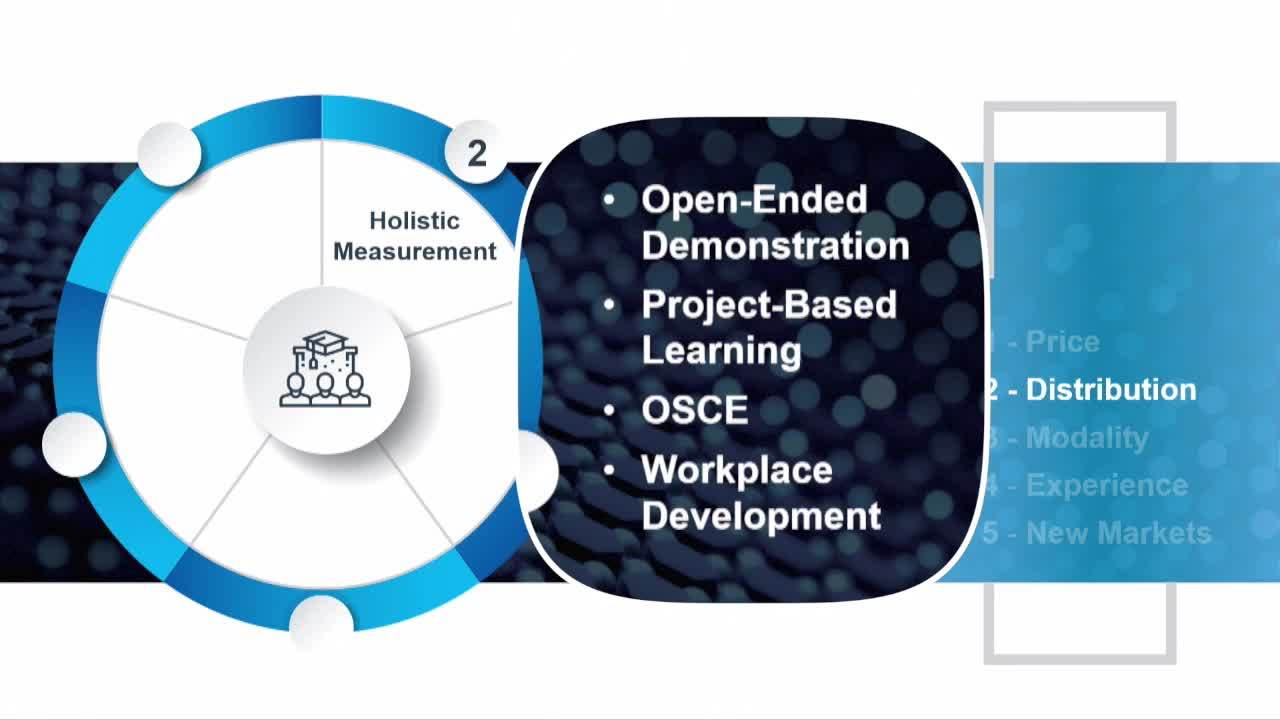
Insights from the EAC 2019 Keynote
The five ways disruption is occurring in assessment in education often mirrors the kind of disruptions that are seen in the typical marketplace. Britt Nichols, ExamSoft CRO, briefly discusses these connections and highlights the importance of understanding how changes in assessment are embraced in education.
[00:00:03] So as we look at assessment, there really are five ways in which assessment has been changing and is continuing to change, and oddly enough, it often overlaps the way that markets are being disrupted as well. So if you think about it this way, real time data driven results, that’s probably the first and foremost way in which assessment is being changed, certainly by the digital revolution. You get those responses immediately. You have all this information and data available at your fingertips. What does that do? Because it’s instant and because you’re no longer have lots of people trying to create that and lots of paper that’s reducing the cost. And so that’s price. Also, you have holistic measurement. We can now see people from a variety of different capacities, whether it’s through workplace development, whether it’s through micro competencies, whether it’s through project based learning, Open-Ended demonstration. These are all ways in which we are holistically measuring those individuals. And that’s not too dissimilar to the distribution model. So we’re distributing these tests in different environments. Additionally, there’s a modality shift. That modality shift is continuous testing. So you’re doing it informatively, you’re doing it through your cell phone and polling and engagement. You’re doing it online. Different modalities, also tailored learning. So if we think about adaptive testing or artificial intelligence or predictive analytics, natural user interfaces, gamification, these are all ways in which the experience is changing for the user as it relates to testing. And then last but not least, are the new markets. Well, how is that will shift in scoring, if you think about it from the standpoint of specialized rubrics or alternative grades, or there may even be other things that I’m not aware of that are coming out. But this is a new market and this is a new opportunity. And so the changes in assessment very much mirror the disruption that’s occurring in the regular business markets. And so as we think about that, it’s important for us to say, OK, the changes here, the landscape is different. How are we embracing?



